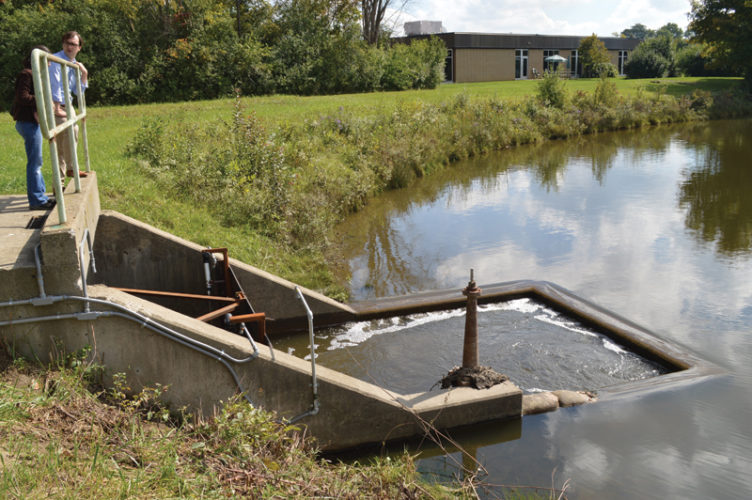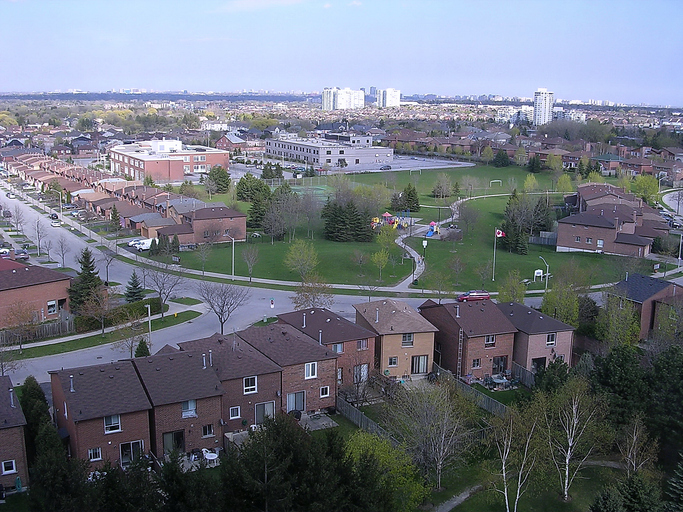“If I had an ultimate vision… it would be that there would never be a flood ever again in any city in the world.” Dr. Branko Kerkez of the University of Michigan made that bold statement in 2015 as he embarked upon a project to apply intelligent cyberinfrastructure to control urban stormwater.
“In the era of self-driving cars, digital assistants, and other smart things, can the same level of autonomy and ‘intelligence’ be embedded in water systems? Such technologies have the potential to dramatically reshape adaptation to some of the greatest water challenges, such as floods and droughts,” said Dr. Kerkez.

Great Lakes funds for new water systems
This type of curiosity and leadership is at the heart of the $14 million portfolio of innovations in water management funded by the Great Lakes Protection Fund (GLPF). With an $800,000 grant, Dr. Kerkez and his team of academic, industry, and municipal partners are using information technology to reconfigure otherwise static urban water systems into systems that can adapt to real-time weather conditions.
Through the use of valves, pumps, and gates intended to enhance existing green and grey infrastructure, flows are controlled in response to sensor readings and weather forecasts. Forecasting allows the system to prepare for an event, and sensor readings are fed into algorithms to determine how best to utilize the stormwater capacities and treatments already available.
Those digital decisions impact activities on the ground: as a storm event moves across the landscape, the allocation of storage becomes dynamic. An intelligent system can activate gates and valves to strategically hold back water, slowing the flow if the system becomes overwhelmed. Increased retention also provides an opportunity to optimize the ecosystem services of green infrastructure, maximizing filtration, and minimizing nutrient outflows.
Real-time testing and results
Dr. Kerkez’s GLPF-funded team is testing this real-time stormwater control system in the City of Ann Arbor where a series of basins drain into a large-capacity constructed wetland intended to mitigate downstream flooding. They have found that one strategically-placed valve, controlled remotely as part of a smart system, was able to hold back an estimated five to seven million gallons of water, allowing the site to function like a wetland that was 50 per cent larger.
From the perspective of the deputy water resource commissioner, the City of Ann Arbor is saving an estimated $1 million in avoided new construction costs. That additional volume of retention significantly reduces the stress on flood-prone areas downstream. It also presents an opportunity to improve downstream water quality by reducing nutrients (including phosphorous), salt and other pollutants that are filtered out because of longer retention times and controlled release.

This type of a coordinated, adaptive system provides a unique solution to infrastructure issues faced by most urban centers in the Great Lakes region. For municipalities on a tight budget, it provides low-cost enhancements to utilize existing infrastructure more efficiently. This could mitigate the pressure for new construction or the replacement of degrading infrastructure.
As part of the GLPF funding, sensors and controllers are actively informing decisions in the Great Lakes region in Ann Arbor, Toledo, and Milwaukee. As the data shows improved system conditions and as the technology becomes more ubiquitous, other communities have taken notice. Additional collaborations include Detroit and Benton Harbor, Michigan; Pittsburgh, Pennsylvania; Dallas, Texas; and Mexico City.
At open-storm.org, Dr. Kerkez has made available the technologies and case studies explaining these smart water systems. The technology is open-source so that cities can deploy their own sensors and monitor the performance of their existing infrastructure. The available documentation and tutorials provide the information to cities about how to deploy smart water assets to control the flow of water across their landscape.
The ability to know when an urban water system has reached capacity, and to have an action plan ready when it does, better enables water managers to protect their assets and residents. Deploying smart controls to achieve multi-dimensional system improvements—including reduced costs, improved infrastructure performance, reduced flooding, and improved water quality—will reconfigure how cities think about increased volumes of rainfall and how to achieve healthier Great Lakes.
For further information about GLPF, visit glpf.org.










